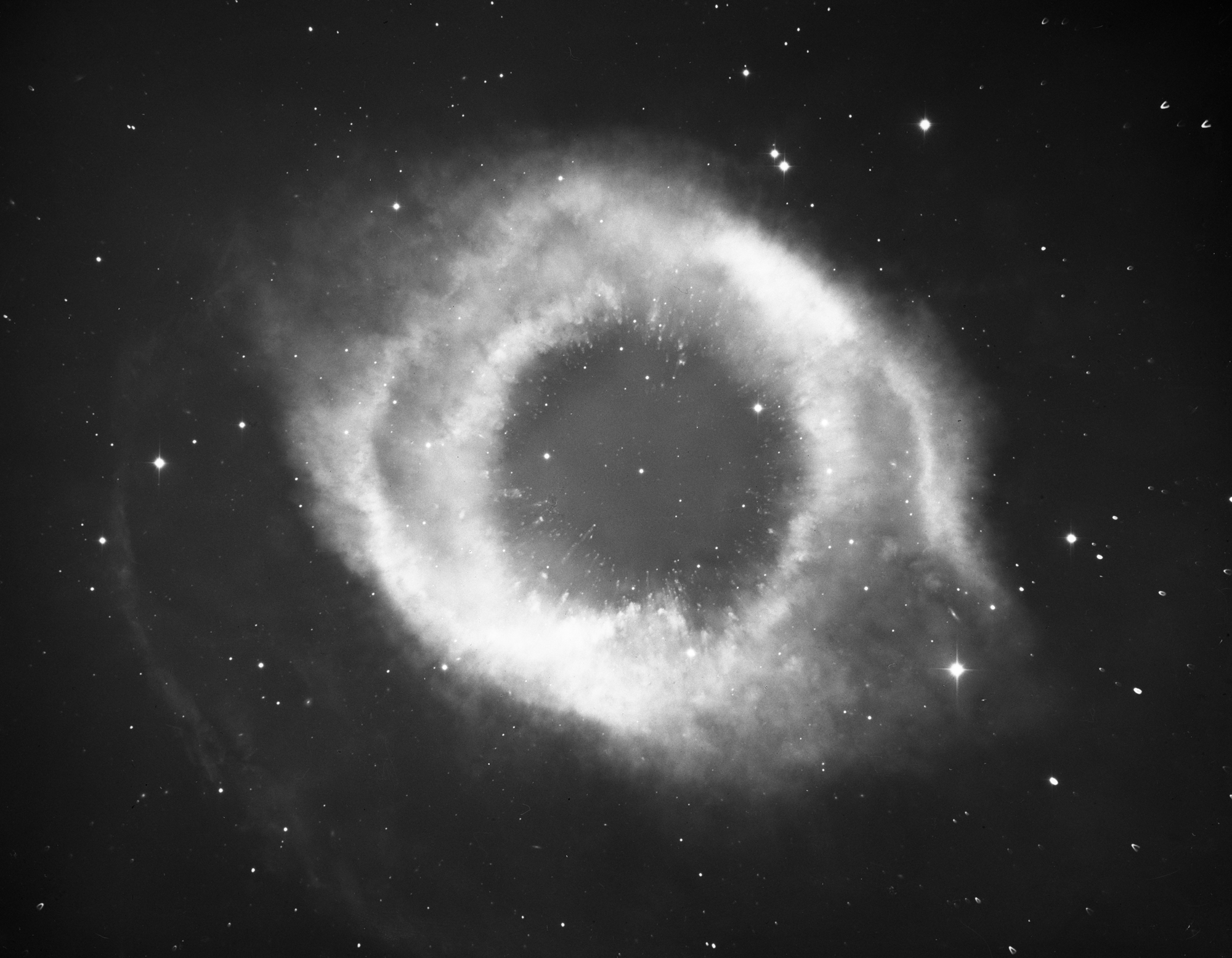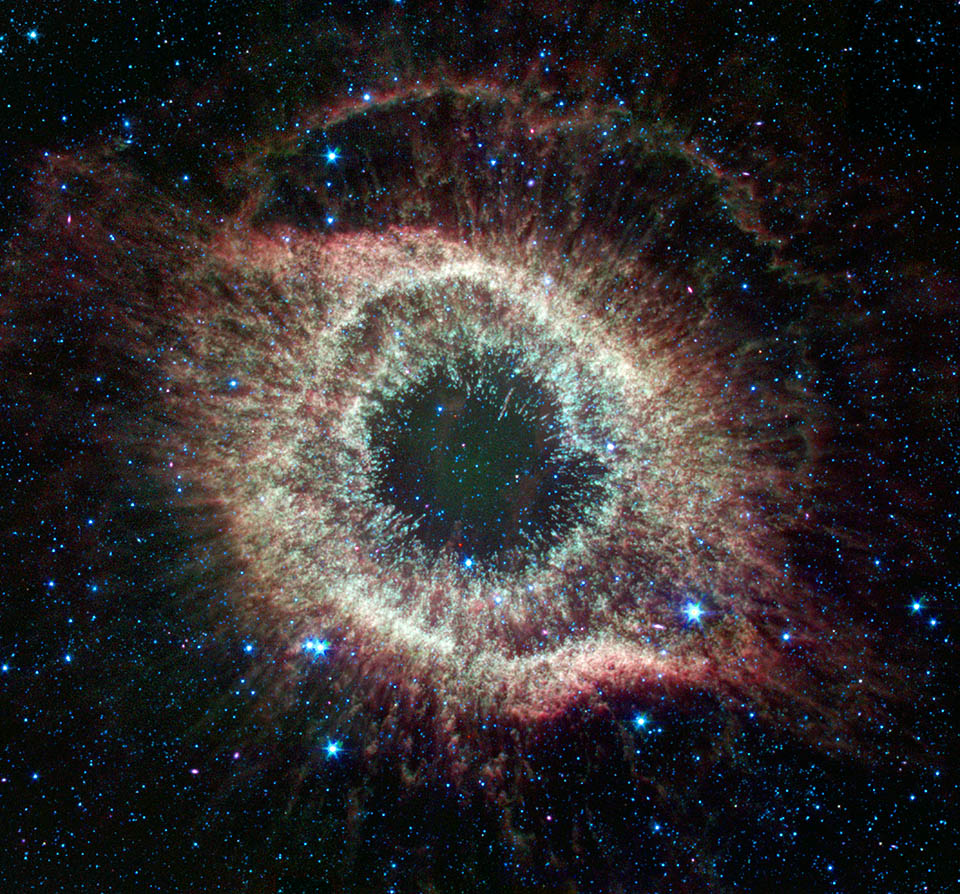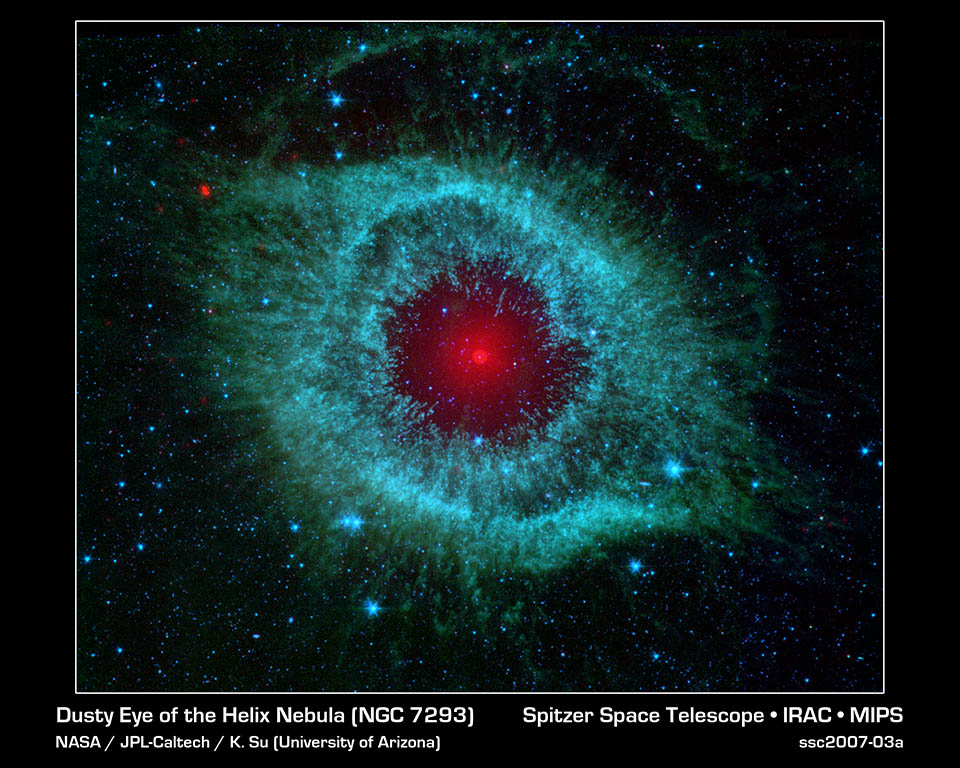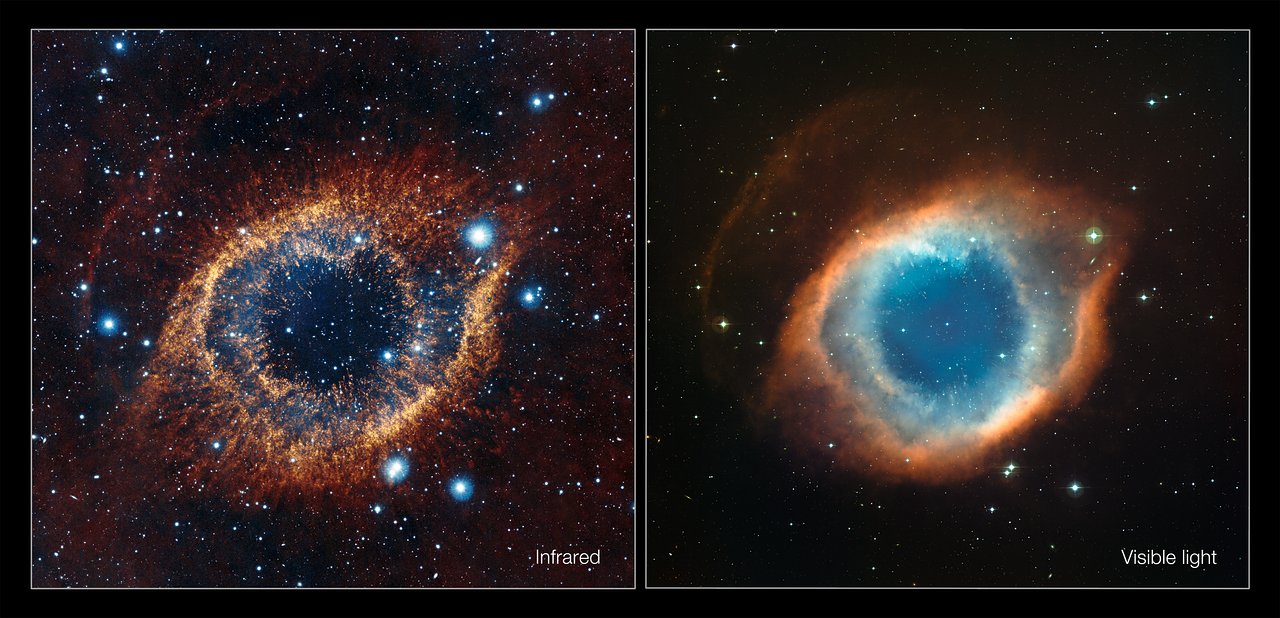Take a huge volume of hydrogen gas mixed with some helium and other trace elements from the last star that went supernova in the cosmic neighborhood, wait for it to coalesce and blaze into an average star like our Sun, sit back and relax for the next 10 billion or so years and you will eventually get something that looks like this:
Well, in 1952 that was the best image we could get of the Helix Nebula. It was taken with the 200 inch Hale telescope at the Palomar Observatory in California. This black and white image only gives us a glimpse of this planetary nebula – the remains of a Sun-like star’s final death-throws.
Today, the same nebula looks like this:
Please note that this striking difference is not evidence of the changes the nebula has gone through but the revolution we have had in astronomy, especially with terrestrial based telescopes with adaptive optics to compensate for our dynamic atmosphere.
This optical image of the Helix Nebula was taken in May of 2003 was taken by the Hubble Space Telescope and composited with images taken with a smaller telescope at the Kitt Peak National Observatory in Arizona. The compositing was done because of the large area the nebula covers—almost half the diameter of the full Moon—and Hubble’s small field of view. In this optical image the red color indicates oxygen while the blue corresponds to nitrogen and hydrogen.
Looking deeper into the interior of the nebula one can see comet-like structures shown below.
To get a sense of size, these bulbous, comet-like shapes are on the order of the size of our Solar System. They have been sculpted out of the dust and gas by the high energy solar wind coming off the white dwarf star located at the center of the nebula. The material was blown off from the original star when it ballooned into a red giant several times as it aged and consumed its fuel—hydrogen.
The Helix Nebula is one of the closest at a distance of about 650 light-years from Earth, and it is about three to six light-years across. It can be found in the constellation of Aquarius. The Helix also goes by its catalog number NGC 7293.
Originally called the Helix because it was thought that we were viewing the nebula along its length. More recent research seems to indicate that the nebula instead of tube-like is more like a bubble with a ring of debris. This can be more easily seen in the video below where a 3D projection of the nebula has been simulated. This may be indicative of a binary system.
When we venture into the infrared part of the spectrum, we can see structures that are hidden by the dust and gas that absorb the visible wavelengths of light. The Spitzer Space telescope has presented several views of the Helix Nebula taken in 2007.
The region of the white dwarf can be seen in the image below as a bright white dot in the center of the red zone. Note that this is not the star, which is about the size of the Earth, but the surrounding cloud of dust and debris that remains around the star. If you look closely you can see a circular zone of dust surrounding the white core, which is a high concentration of dust and debris akin to the Oort cloud that surrounds our star, which harbors a tremendous number of comets, asteroids, planetoids and debris from the early stages of the Solar System.
The image below shows a composite between the visual and infrared. Hubble and Spitzer images have been combined to show even more detail. Higher energies exist nearer the center, indicated in blue to lower energy – yellow to the cooler reds at the edges.

Composite of visual and infrared image of the Helix Nebula by the Hubble and Spitzer Space Telescopes
Still looking at the nebula in the infrared we get this amazing image on the left from the 4.1 meter VISTA (Visible and Infrared Survey Telescope for Astronomy) at the ESO’s Paranal Observatory in Chile. Just as in the Spitzer images above we see much more of the structure of the nebula because we are looking at the longer wavelengths in the infrared.
It is interesting to note that all the dust and gas that you see in the image, covering 6 light-years at its widest is star-stuff, debris from the star itself. It’s easy to see how stars, the factories of all the elements that we know, can distribute these elements across the cosmos. Under a more benign death such as this, material is being scattered across a huge area. Imagine the consequences of a supernova!
In about 5 billion years our star will begin to form its own planetary nebula. As beautiful as these nebulae are it is important to understand that they are transitory. They will spread out and disperse over time and disappear. In about 50,000 years the Helix will be gone. Enjoy it while it lasts!
Till next time,
RC Davison






